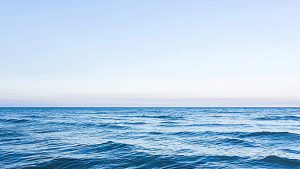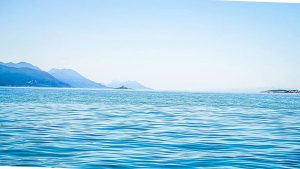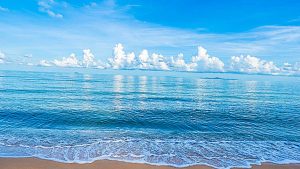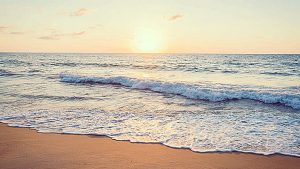Differences between ocean and sea: Water bodies are collections of water on the earth’s surface. This phrase can apply to the ocean, sea, and more. Knowing the distinction between ocean and sea is important because of this. It will assist us in dispelling many myths.
Around 70% of the earth’s surface is made up of enormous bodies of water called oceans. Seas, in contrast, are smaller waters that land partially encloses. So you can see that our planet’s five seas are actually simply one massive, linked body of water. On the other hand, there are about 50 smaller seas scattered over the globe. When we study more closely at their depth, area, and marine life, we might discover their distinctions.
Definition of Ocean
Huge bodies of water called oceans encompass over 70% of the planet. They are deeper and bigger than the sea. Additionally, the way ocean currents flow affects weather all throughout the planet. This intercontinental body of water is salty. It then merges with the smaller oceans. The Pacific, Atlantic, Arctic, Indian, and Antarctic oceans are the five oceans that make up the entire earth. The majority of marine species cannot survive in the ocean because of its size and depth. Shrimps, bacteria, and minute planktons are frequently seen in this area.
Definition of Sea
A body of water that is smaller than the ocean is referred to as a sea. It is made out of salt water and is located where the ocean meets the land. There are seven oceans altogether in the earth. With the exception of the Caspian Sea, which is surrounded entirely by land, they are all at least partially encircled by land. The sea is also more abundant in marine life than the ocean because it is shallower and closer to the surface. As a result, marine life can thrive there. Additionally, the marine life that lives in a specific sea is determined by the water’s location and temperature.
Recommended: Differences Between Active Voice And Passive Voice (With Examples)
Differences Between An Ocean And A Sea
1. Location: The ocean is a large, saltwater body of open space. It holds 97 percent of the Earth’s water and covers around 71 percent of its surface. Because it is so big, barely 5% of it has been investigated. Although there is just one ocean on Earth, scientists often classify it into five primary basins that are interconnected: the Pacific, Atlantic, Indian, Southern, and Arctic.

Seas are more difficult to characterize. They are, in general, bodies of water that are encircled or partially contained by land. They are, in other words, the area of the ocean where dry land meets water. However, totally landlocked oceans do exist in a few significant outliers. For instance, although being categorized as a sea, the Caspian Sea is regarded as the biggest lake in the world.
The famous “seven seas” are significant ancient trade routes. These oceans are not set in stone; rather, they shift with time and location. The Aegean and Adriatic were included in this list according to the ancient Greeks, although the Baltic and Arabian Seas are mentioned in literature from the Middle Ages in Europe. The seven seas were once again expanded during the colonization of the Americas to include new seas like the Caribbean and the Gulf of Mexico. There are already more than fifty recognized seas spread out throughout the globe, despite the fact that there is only one global ocean—or five, depending on one’s perspective.
2. Size: The five ocean basins are enormous, although their sizes vary greatly. By far the largest at 168 million square kilometers is the Pacific. It stretches over the whole planet from north to south, bordering several nations in Asia and the Americas. The Arctic, which is the only region in the north polar region, comes in last with 15 million square kilometers, more than 150 million square kilometers less than the Pacific.

Similar to how it is challenging to determine the average size of our oceans, which come in a variety of sizes and forms. However, generally speaking, they are much smaller. With 2.9 million square kilometers, the Mediterranean is the world’s biggest sea and is connected to the Atlantic Ocean. It is still smaller than the Arctic Ocean, though. The Caribbean, the South China Sea, and the Pacific’s Bering Sea are some more large waters. In contrast, the Sea of Marmara, a sea fully within Turkey, is one of the smallest, at only 11,350 square kilometers.
Also see: How To Overcome Fear Of Failure: 10 Proven Strategies
3. Depth: The ocean is 3,700 meters deep on average, although certain areas are significantly deeper. At 11,034 meters, the Mariana Trench is the deepest spot on Earth; if Mount Everest were to be positioned at the bottom, it would be fully buried. The epipelagic, mesopelagic, bathypelagic, abyssopelagic, and hadalpelagic zones are the five layers on which most specialists agree on separating the ocean into its various zones.

The Mariana Trench should obviously be at the bottom. The bathypelagic, which descends to a depth of 4,000 meters, contains the oceanic areas that make up the average depth. The epipelagic zone, which stretches from the surface down to 200 meters, is present in all oceans and seas. Since there is a lot of sunshine in this stratum, photosynthesis may occur.
In general, seas are smaller and significantly shallower than oceans. The Caribbean, the deepest sea in the world, has a depth of 7,686 meters, which is much greater than the ocean’s mean depth. Other seas also have tremendous depths.
4. Marine Life: The ocean is home to an estimated one million different animal species, but they are not all distributed equally around the planet, according to experts. The number and degree of diversity of these organisms within particular geographical areas is influenced by a variety of variables. These variables include temperature, depth, and proximity to land.

Seas tend to be more hospitable habitats, which is why fish and other aquatic species tend to flourish there. Plankton and shrimp are examples of more primitive living forms found in oceans, which are often more deeper and larger. Due to this fundamental distinction, seas are more frequently used for commercial fishing whereas oceans are used for the extraction of other resources like oil and natural gas.
See also: Reasons Why Businesses Fail In Nigeria: Top 15
Conclusion
Despite the fact that the terms “ocean” and “sea” are sometimes used interchangeably, this is erroneous. There is just one ocean in the world, a huge, unbroken mass of salt water that may be divided into five main basins. On the other hand, seas are usually discrete portions of an ocean that are partly encircled by land. Their size, depth, and variety differ between the two.
Water mostly encircles Earth. Because of this, we may start to truly comprehend our lovely blue globe as we learn more about our oceans and seas.